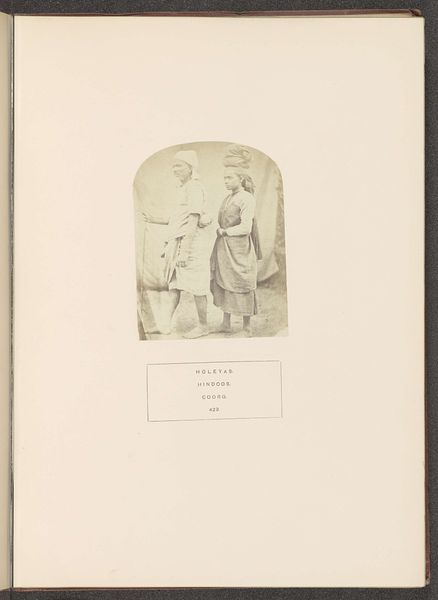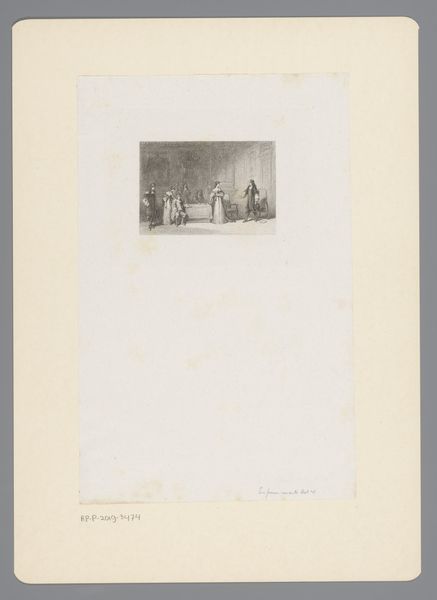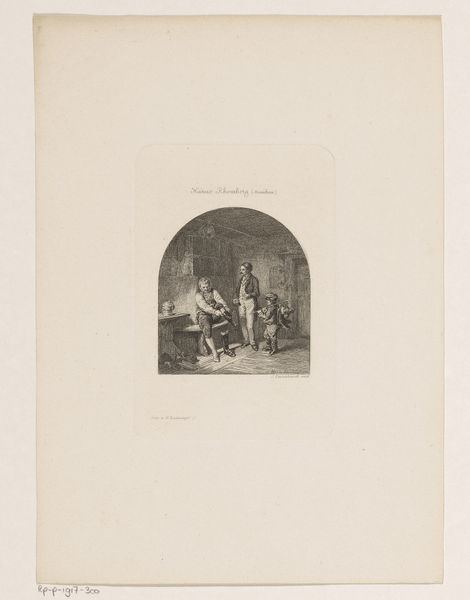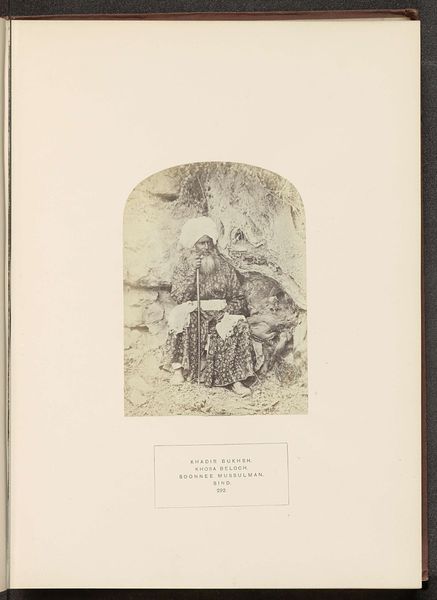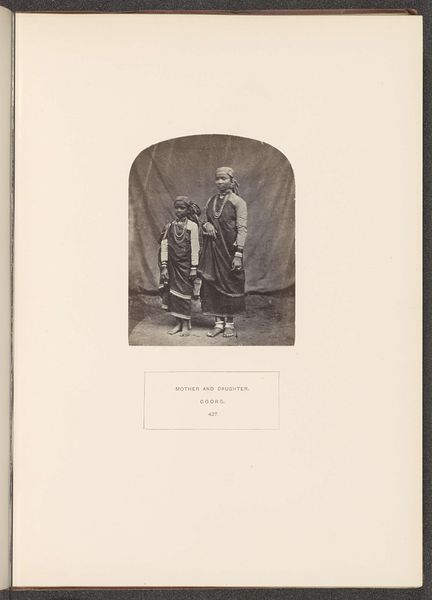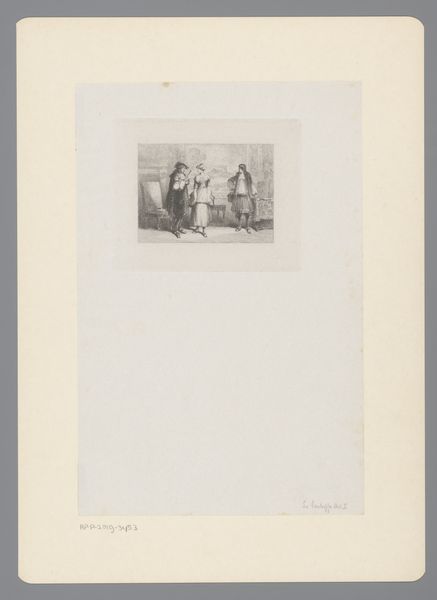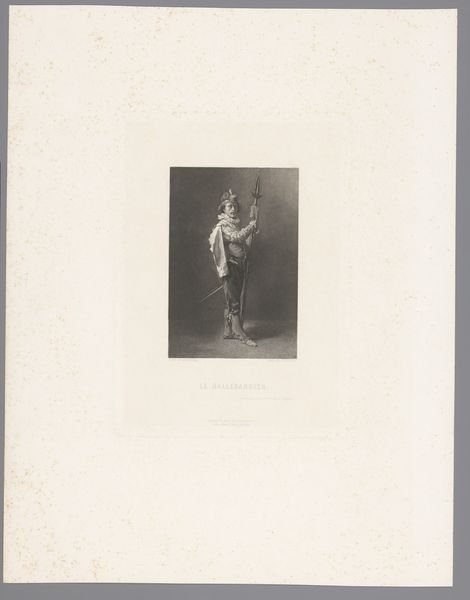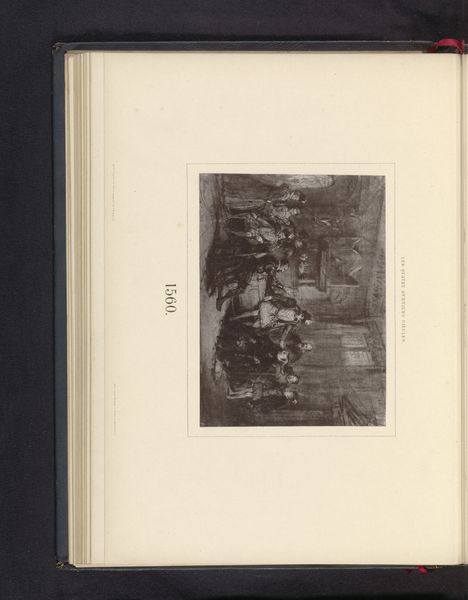
#
light pencil work
#
ink paper printed
#
sketch book
#
hand drawn type
#
personal sketchbook
#
hand-drawn typeface
#
pen-ink sketch
#
ink colored
#
sketchbook drawing
#
sketchbook art
Dimensions: height 116 mm, width 87 mm
Copyright: Rijks Museum: Open Domain
Curator: Here we have a fascinating portrait, "Portret van Meder en zijn vrouw, landbouwers uit Kodagu," created by G. Richter before 1875. It's an ink and pencil sketch on paper. Editor: The first thing that strikes me is the starkness of the image. The almost monochrome quality emphasizes the textures and the subjects' quiet dignity. The figures take prominence against a hazy, nebulous background. Curator: The composition certainly guides the eye directly to the figures, and the limited tonal range heightens the contrast, bringing out the minute textural details, especially in their garments. I'm intrigued by the way the artist uses light and shadow to create form. Editor: The way the light illuminates the couple reminds me of iconic portrayals of everyday life and labour and the deep roots of societal values associated with rural communities in pre-industrialised nations. Observe, also, the significance of their attire; how does it communicate about their status and identities? Curator: Indeed, the layering of clothing and specific head coverings denotes cultural position. A fascinating element is the subtle use of lines, building texture rather than contour. I appreciate that even within a formal setting, the subjects emanate a certain degree of relaxation, a quiet confidence in the face of the artist’s gaze. Editor: Exactly. While formally posed, the artwork carries with it their essence and lived experiences through their eyes, their poise. Curator: The details of line and shade create more than likenesses. This illustration feels imbued with genuine presence; it surpasses just depicting a scene; rather, it presents us with tangible persons. Editor: Looking into those expressions, one discerns determination coupled with humility; archetypes of resilience etched onto their countenances—a monument to simple virtues which sustain both family life and communal values. Richter, perhaps unintentionally, shows us something vital about this culture through the simplicity of artistic means. Curator: Yes, their image reminds one of resilience and purpose. By examining Richter's construction we learn more than just what he chose to display on paper, rather, about the people in their likeness and about us ourselves. Editor: A valuable thing to take away, is that the exploration of artworks often is not a history lesson about them or even their context of creation. Rather, it provides lessons on how people were shaped back then, are today and will shape tomorrow.
Comments
No comments
Be the first to comment and join the conversation on the ultimate creative platform.

